TLDR Researchers developed a nanomedicine for acne treatment that delivers medication with less irritation and is non-irritating for oily skin.
In 2017, researchers developed a biocompatible nanomedicine for the follicular delivery of adapalene (AD), aimed at treating acne vulgaris with reduced irritation potential. Adapalene was successfully loaded into poly-ε-caprolactone nanospheres (NS) with high encapsulation efficiency (84.73% ± 1.52%), appropriate particle size (107.5 ± 8.19 nm), and negative zeta potential (−13.1 mV), which allowed for sustained release. These nanospheres were incorporated into hydroxypropyl methylcellulose (HPMC) or hyaluronate (HA) gels, and their skin distribution was analyzed. The nanoparticle dispersion led to higher AD retention in skin layers compared to AD suspension, with NS-HPMC reducing and NS-HA increasing AD retention across all skin layers. Confocal laser scanning microscopy (CLSM) showed that the NS were localized in hair follicles, with HPMC gel limiting NS to the upper skin layers and HA gel promoting deeper penetration. The formulation with HA gel–dispersed AD-NS was found to be non-irritating through in vitro and in vivo studies, making it a suitable treatment option for oily, acne-prone skin.
42 citations
,
August 2016 in “Nanomedicine” The new adapalene formulation using TyroSpheres is more effective and less irritating for acne treatment.
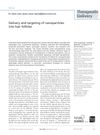 94 citations
,
September 2014 in “Therapeutic Delivery”
94 citations
,
September 2014 in “Therapeutic Delivery” Nanoparticles can improve skin treatments by better targeting hair follicles, but more research is needed for advancement.
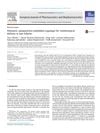 47 citations
,
July 2014 in “European Journal of Pharmaceutics and Biopharmaceutics”
47 citations
,
July 2014 in “European Journal of Pharmaceutics and Biopharmaceutics” Scientists created a gel with nanoparticles to deliver medicine to hair follicles effectively.
110 citations
,
January 2014 in “Journal of Controlled Release” Phospholipid-coated nanoparticles penetrate hair follicles better than others, especially in pig ears.
31 citations
,
January 2012 in “Skin Research and Technology” The w/o lotion with blended cellulose improved curcumin skin penetration best.
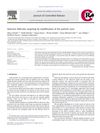 263 citations
,
February 2011 in “Journal of Controlled Release”
263 citations
,
February 2011 in “Journal of Controlled Release” Medium-sized particles penetrate hair follicles better than smaller or larger ones, which could improve delivery of skin treatments.
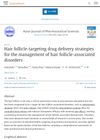 14 citations
,
May 2022 in “Asian Journal of Pharmaceutical Sciences”
14 citations
,
May 2022 in “Asian Journal of Pharmaceutical Sciences” New hair follicle-targeting treatments show promise for hair disorders but need more research on safety and effectiveness.
65 citations
,
March 2022 in “Molecules” Nanocarriers can enhance cosmetics but face regulatory and safety challenges.
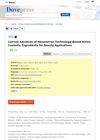 33 citations
,
July 2021 in “Clinical, Cosmetic and Investigational Dermatology”
33 citations
,
July 2021 in “Clinical, Cosmetic and Investigational Dermatology” Nanocarrier technology in cosmetics improves ingredient delivery and effectiveness while reducing side effects.
 57 citations
,
September 2017 in “Journal of controlled release”
57 citations
,
September 2017 in “Journal of controlled release” Nanocarrier-loaded gels improve drug delivery for cancer, skin conditions, and hair loss.
 4 citations
,
July 2023 in “Pharmaceutics (Basel)”
4 citations
,
July 2023 in “Pharmaceutics (Basel)” Nanoparticle-based drug delivery to hair follicles is more effective when tested under conditions that match skin behavior.







